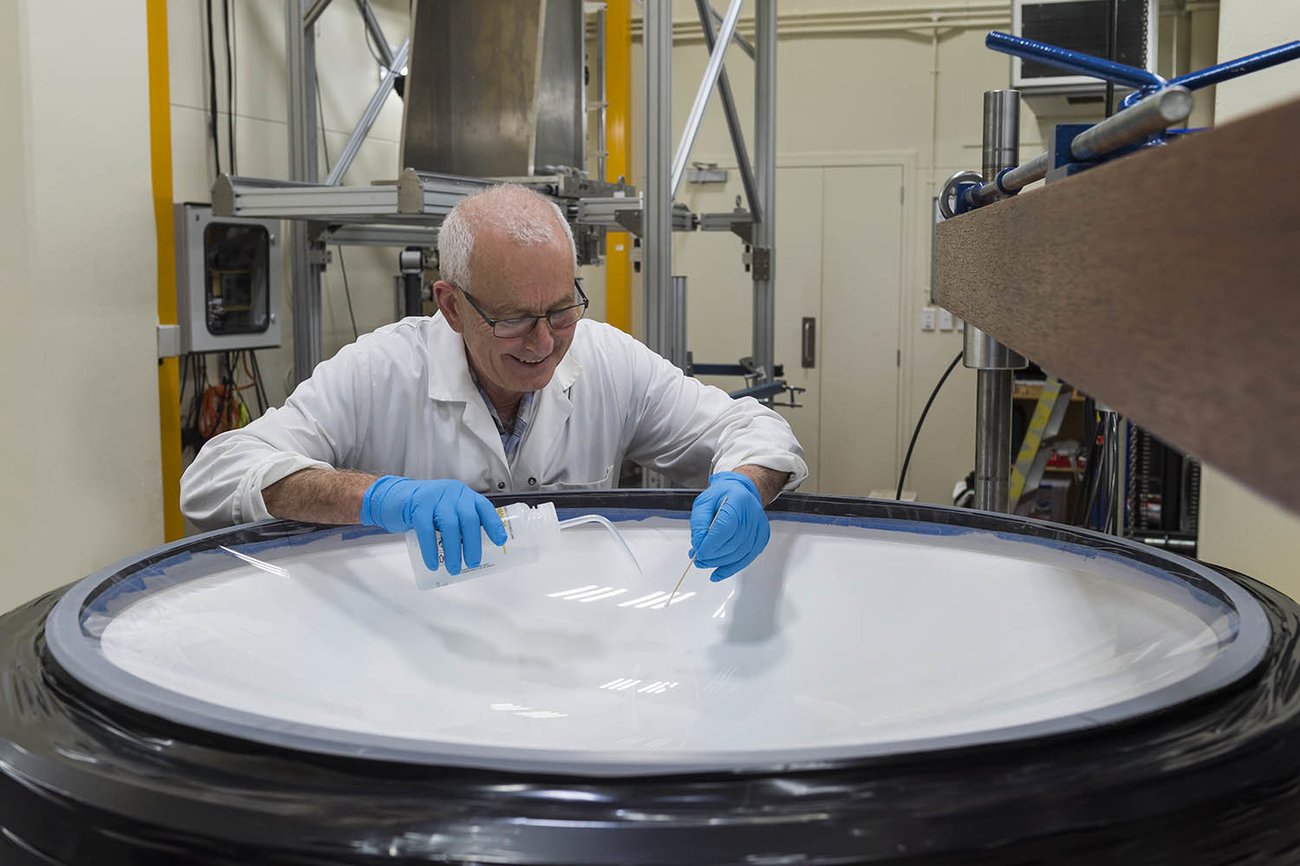
Wellington-based KiwiStar Optics’ 1.1-metre lens is one of six the company built for the William Herschel Telescope project. The original telescope, located on the island of La Palma in Spain’s Canary Islands and built in 1987, is one of the world’s largest, capable of observing stars in the Milky Way and extragalactic sources near the extremes of what we know to be the observable universe. A new facility is under construction, and KiwiStar’s lenses will be a crucial part of that.
KiwiStar is a business unit of Callaghan Innovation. The lenses are the result of several years’ work by a team of scientists, engineers and master opticians based at Callaghan Innovation’s Gracefield research and development campus.
Manager Sandra Ramsay says being able to assist with such important research as what the William Herschel Telescope is doing is a great opportunity. “The delivery of the final lens allows us to conclude what has been a hugely successful project,” she explains. “KiwiStar Optics has a significant reputation globally for its highly-specialised lenses and we are now working our way through a substantial list of large contracts. It’s not widely known outside of astronomy circles that New Zealand has this level of technical expertise and state-of-the-art equipment to create these lenses.”
Check out this podcast with retired NASA astronaut Chris Hadfield on space, tech, New Zealand and more:
Dave Cochrane, team leader of Optical Manufacturing at KiwiStar Optics and the manager of the lens project, says creating a lens isn’t exactly a simple process – but more than worth the effort. “We bring the glass over from the USA, Japan or Germany and then it is milled into shape using our 5-axis CNC mill,” he says. “Once in shape the lens goes through a series of shaping and polishing processes to get it within one micron of accuracy (side note: a human hair is about 75 microns wide). The final polishing process is done using powders as small as 1 micron, and an accuracy down to 0.05 microns (more than 1,000 times smaller than a human hair).
“When both sides of the lens are polished, it is packed and shipped to one of several specialist vacuum coaters in the USA for anti-reflective coating. The lens is then returned to KiwiStar Optics for final testing and inspection before being shipped to the client.”
Cochrane says the complex process means lenses can take more than a whole year to manufacture. The work is a collaborative effort, and includes input from the national metrology institute Measurement Standards Laboratory (another business unit of Callaghan), plus the agency’s specialist mechanical workshop.
Impressive as the William Herschel Telescope lens work is, it’s far from the only work KiwiStar is currently engaged in. Other projects include more lenses (including building three high-resolution cameras for the VISTA telescope in Chile) and constructing spectrographs – instruments that can separate starlight into a frequency spectrum that can be recorded and studied.




